Key takeaways:
- Grants align charities’ missions with funding sources, offering essential support and enhancing credibility and visibility.
- A compelling narrative, a transparent budget, and measurable outcomes are crucial for successful grant applications.
- Identifying suitable grants involves researching aligned organizations, utilizing online databases, and networking for hidden opportunities.
- Effective grant writing emphasizes clarity, tailoring proposals to funders’ interests, and seeking feedback for improvement.
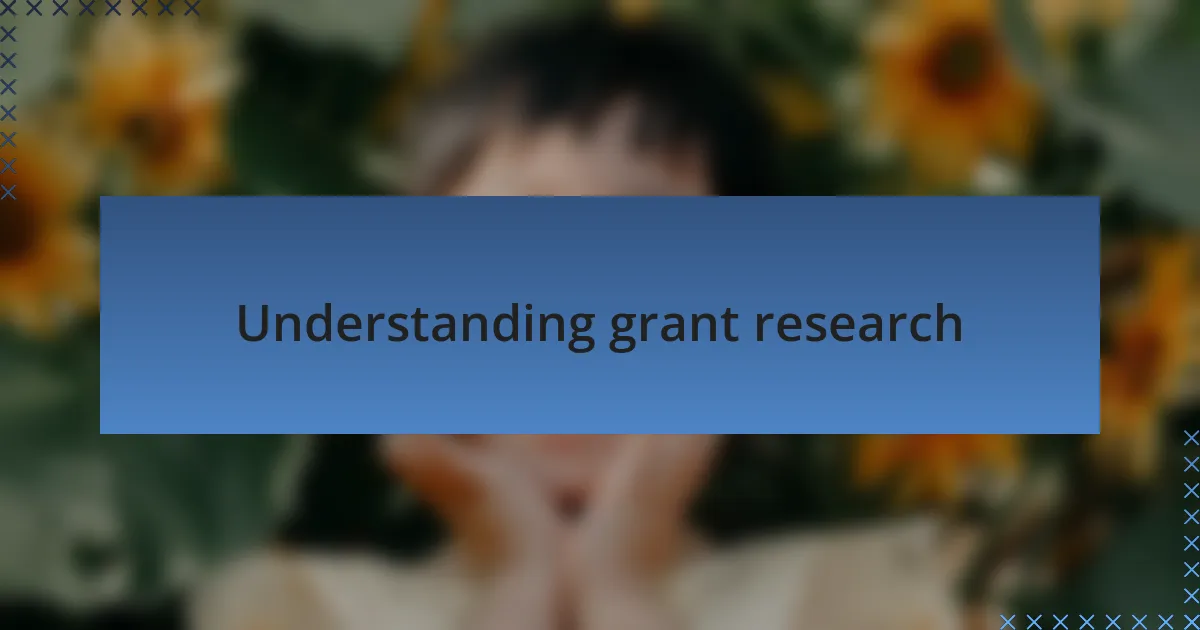
Understanding grant research
Grant research might seem like a daunting task, but it’s truly an opportunity to align your charity’s mission with the right funding sources. I remember the first time I navigated through a mountain of grant applications. It felt overwhelming, yet exhilarating, as I discovered how each grant could potentially support our cause.
When diving into grant databases, I often ask myself, “What would resonate with the funders?” Understanding their priorities is crucial. It’s about more than just numbers; it’s about connecting emotionally with their mission and showing how your project can make a genuine impact in the lives of children.
I’ve learned that sifting through the details of a grant can feel like unearthing treasure, especially when you find one that perfectly matches your needs. Each grant you research tells a story, and each story offers a chance to create a brighter future for children. Have you ever found a grant that just clicked? Those are the moments that remind me why I got involved in grant research in the first place.
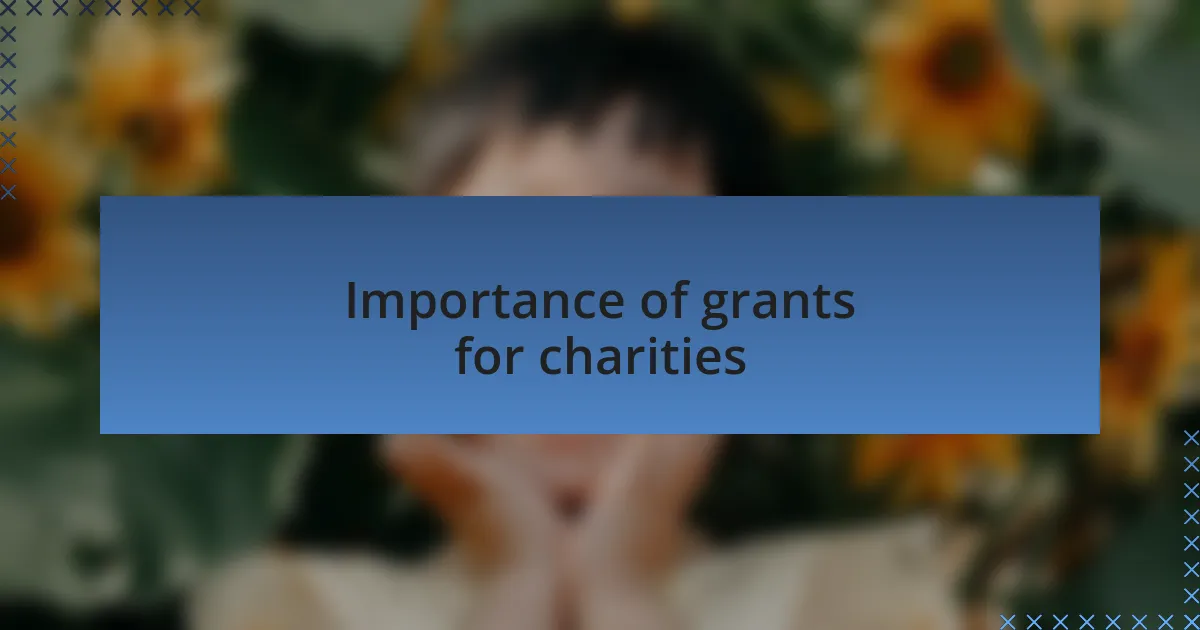
Importance of grants for charities
Grants provide essential funding that helps charities bring their programs to life. I recall a project where we aimed to provide educational resources to underprivileged children. Securing a grant turned that dream into a reality, allowing us to purchase books and materials that made a real difference. Without grants, many innovative initiatives would simply remain ideas on paper.
The importance of grants extends beyond mere funding; they also lend credibility to a charity’s efforts. When I saw our charity featured alongside the names of well-known grant-making organizations, it boosted our visibility and trust within the community. Have you ever felt that spark of validation? It reinforces the belief that we’re doing meaningful work and encourages others to support us.
Moreover, grants often require us to articulate our goals and outcomes clearly. This process has refined our mission and strategy, pushing me to be more focused and intentional. It’s a journey of continuous improvement; I often find myself reflecting on how each grant application helps us grow stronger as a charity. Isn’t it fascinating how these funding opportunities can shape not just our projects but also our entire approach to making a difference?
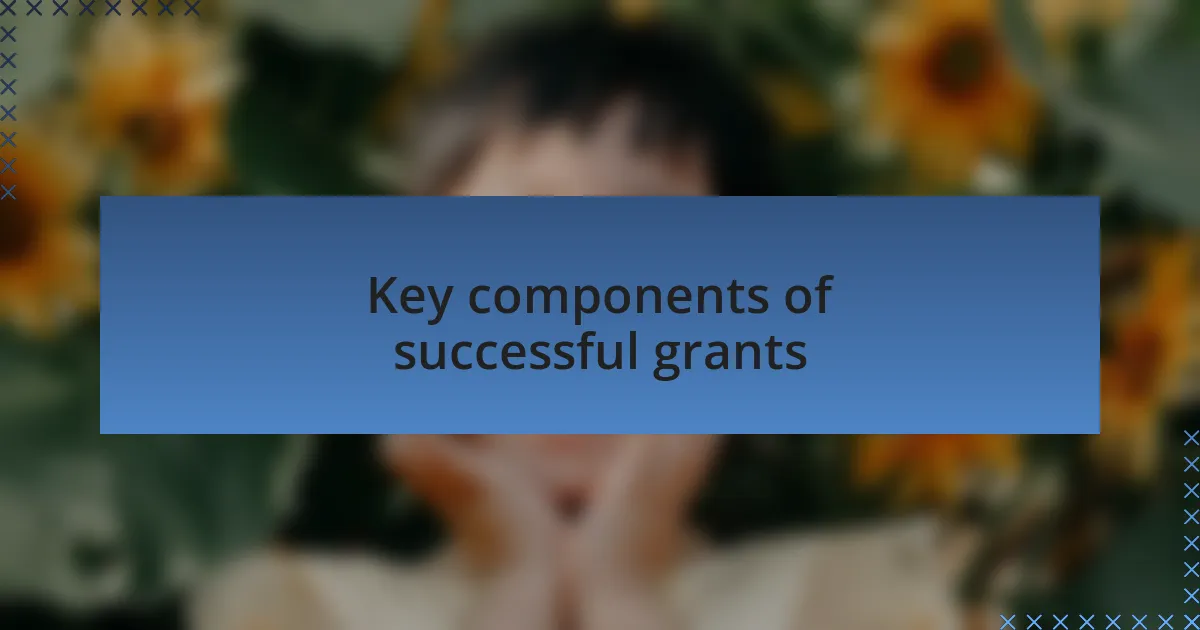
Key components of successful grants
Successful grants hinge on a compelling narrative that resonates with funders, showcasing not only the urgency of the need but also the tangible impact of the proposed solution. I vividly remember crafting a story for a grant that centered around a specific child whose life was transformed by our program. When I shared her journey, the funders were not just reading statistics; they were connecting emotionally. Have you ever noticed how a well-told story can create an immediate bond?
Another critical component is a well-structured budget that transparently outlines how funds will be utilized. In my own experience, a clear budget not only demonstrates fiscal responsibility but also illustrates the charity’s commitment to efficacy. I once had a donor express admiration for our detailed plan, stating it gave them confidence that their investment would yield significant results. Isn’t it reassuring to know that clarity can pave the way for support?
Lastly, demonstrating measurable outcomes is essential. Funders want to see how their investment translates into real change. I’ve often included specific metrics in my applications, allowing us to showcase progress and adjust our strategies as needed. This isn’t just about securing funds; it’s about accountability and building a relationship with our supporters. Don’t you think it’s vital to show that we are committed to making every dollar count?
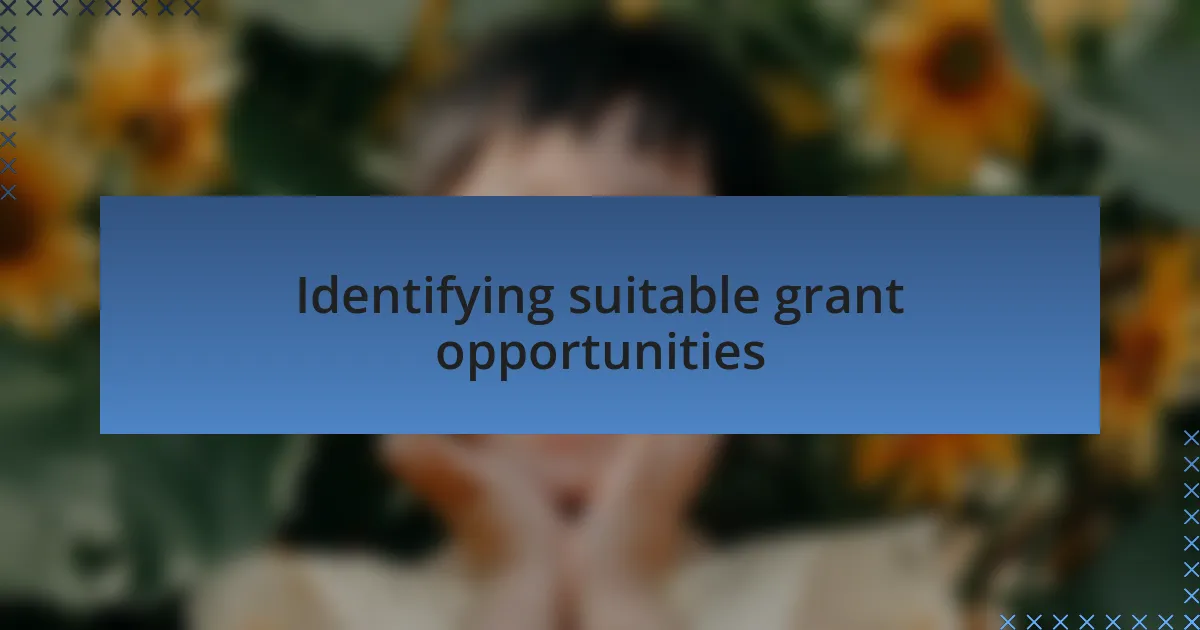
Identifying suitable grant opportunities
When it comes to identifying suitable grant opportunities, I always start by researching organizations that align with our mission. In one instance, I discovered a foundation that specifically focused on educational programs for disadvantaged children. After learning about their recent initiatives, I realized our project perfectly matched their interests. Have you ever found an unexpected connection that felt like a spark of inspiration?
Next, I utilize online databases and grant directories tailored to nonprofits, which makes the search more efficient. I once spent an afternoon navigating through various platforms and stumbled upon several grants I had never heard of before. This exploration taught me that persistence is crucial; the more time you spend seeking opportunities, the greater the chances of uncovering those hidden gems. Do you ever wonder how many incredible resources are out there just waiting to be discovered?
Finally, I recommend networking with other organizations and professionals in the field. By sharing experiences and insights over coffee or at conferences, I often hear about grants that may not be widely publicized. During one such event, a fellow charity director mentioned a funder who values collaboration, leading to a successful partnership. Isn’t it interesting how connections can open doors to opportunities we never thought possible?
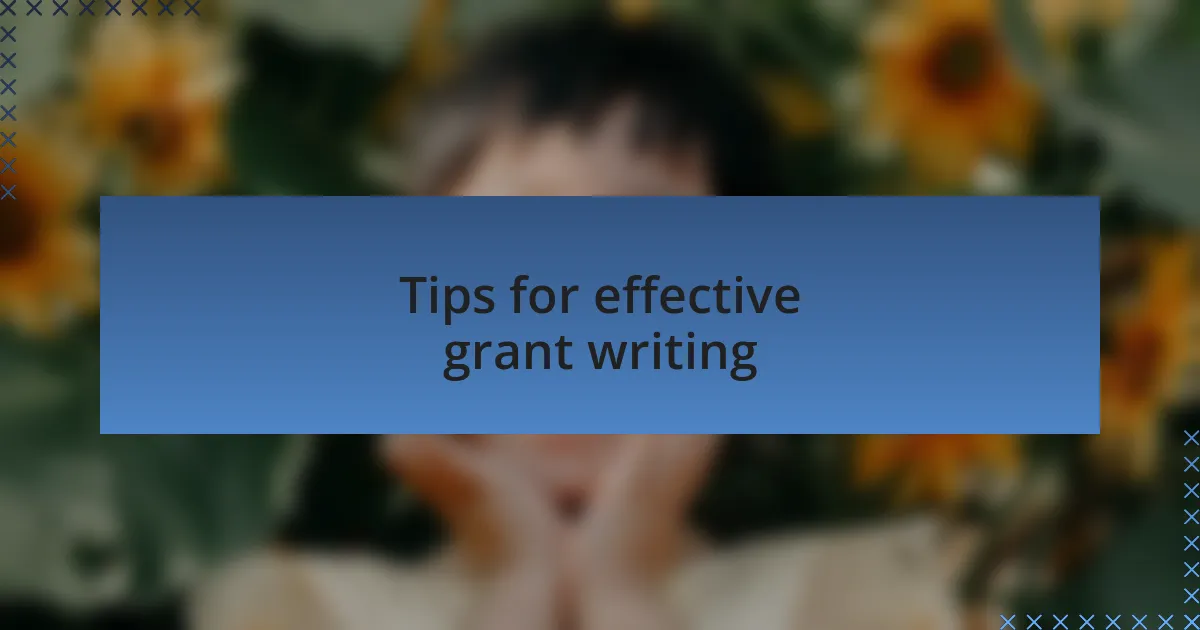
Tips for effective grant writing
When it comes to actual grant writing, clarity is paramount. I’ve learned that funders often skim applications, so I make it a point to clearly articulate our mission and objectives right from the start. One time, I submitted a proposal that was straightforward, and its simplicity resonated, leading to a successful funding outcome. Have you ever thought about how overwhelming jargon can be?
Another key tip is to tailor each application to the specific grantor’s interests. I recall a particular instance where I took the time to reflect their language in my proposal, emphasizing our shared impact on children’s mental health. It was rewarding to see how that attention to detail not only strengthened the application but also helped build rapport with the funder. Isn’t it fascinating how a little personalization can make such a big difference?
Lastly, don’t underestimate the power of feedback. Before finalizing an application, I always seek input from colleagues or mentors. In my experience, their fresh perspectives often uncover areas for improvement I hadn’t considered. Have you ever wished you had someone to bounce ideas off of during the writing process? Collaboration can truly elevate the quality of your grant applications.